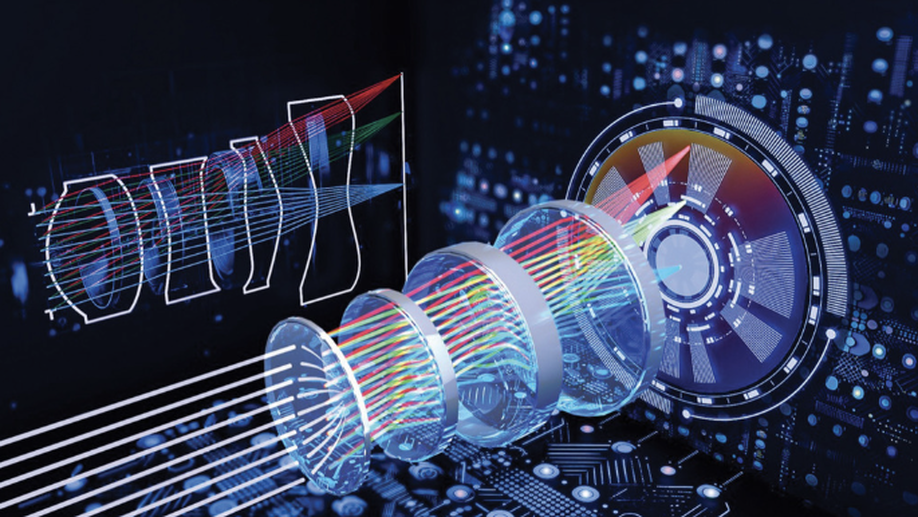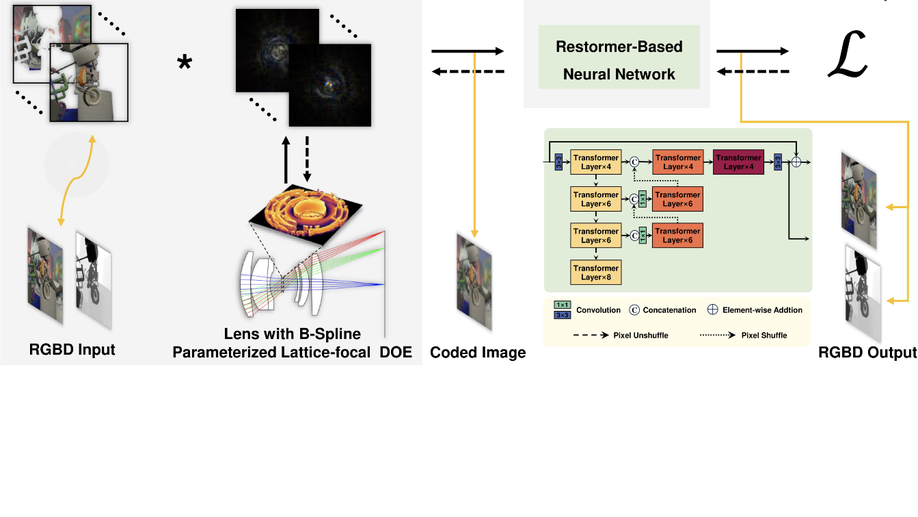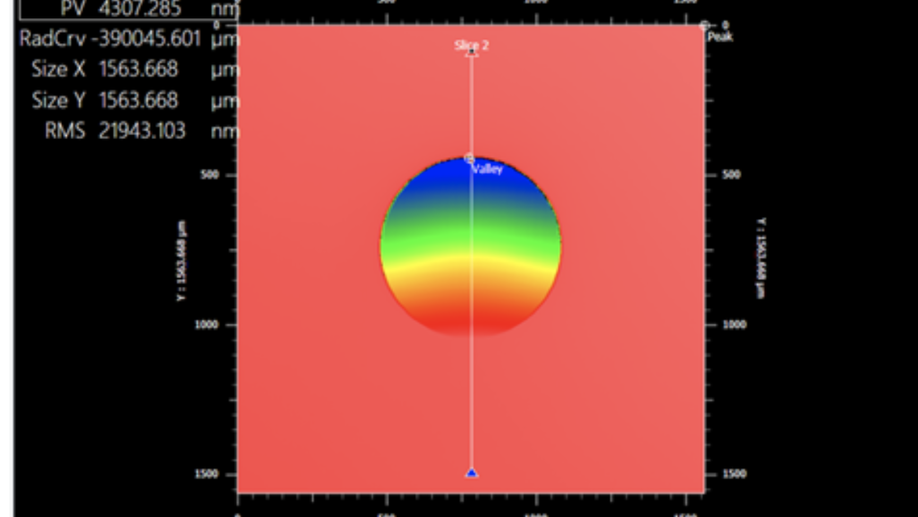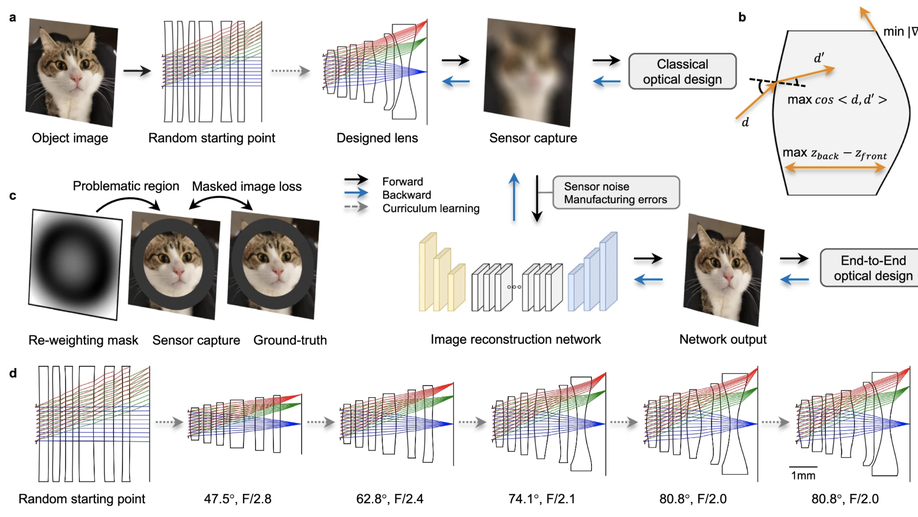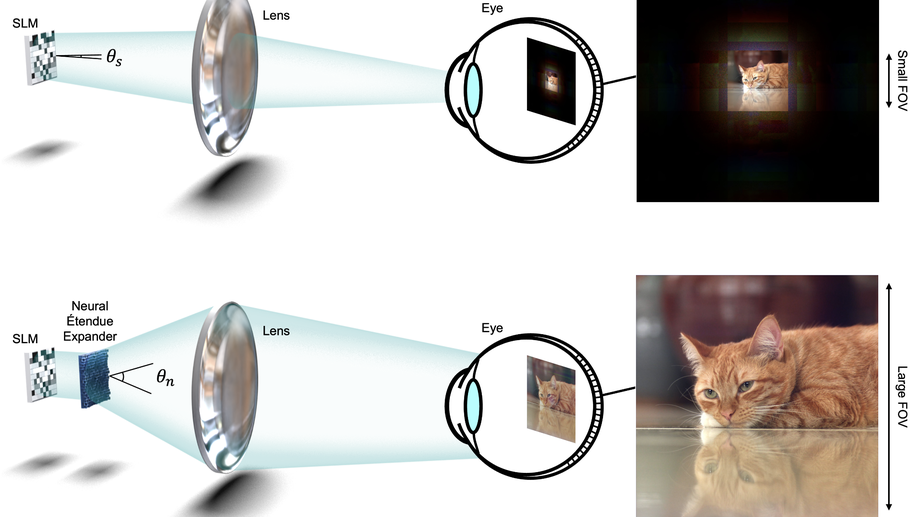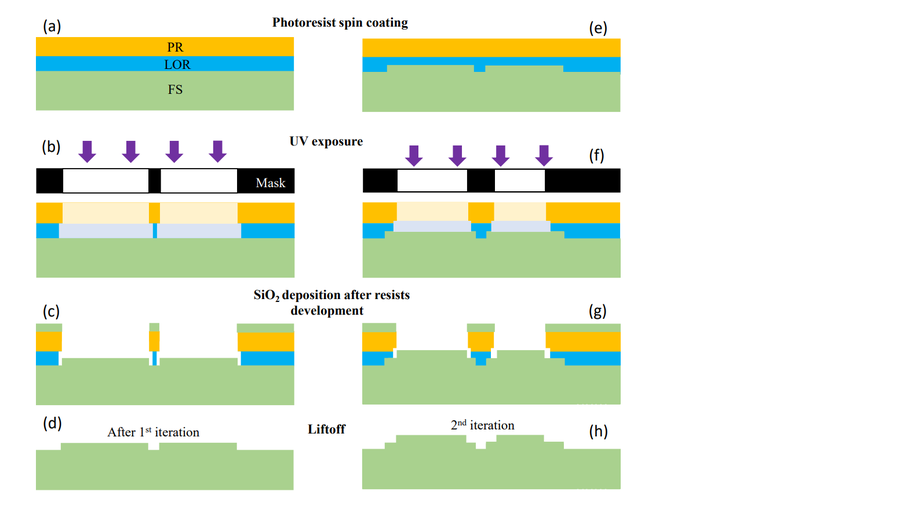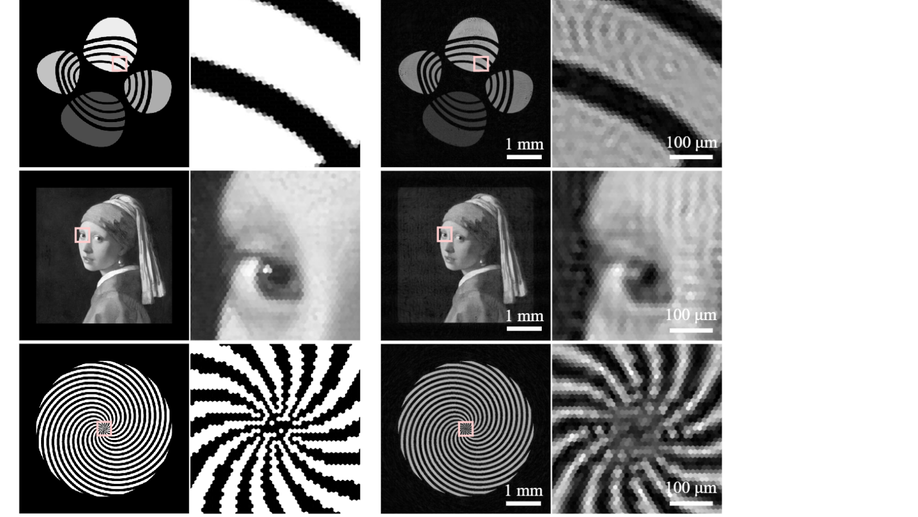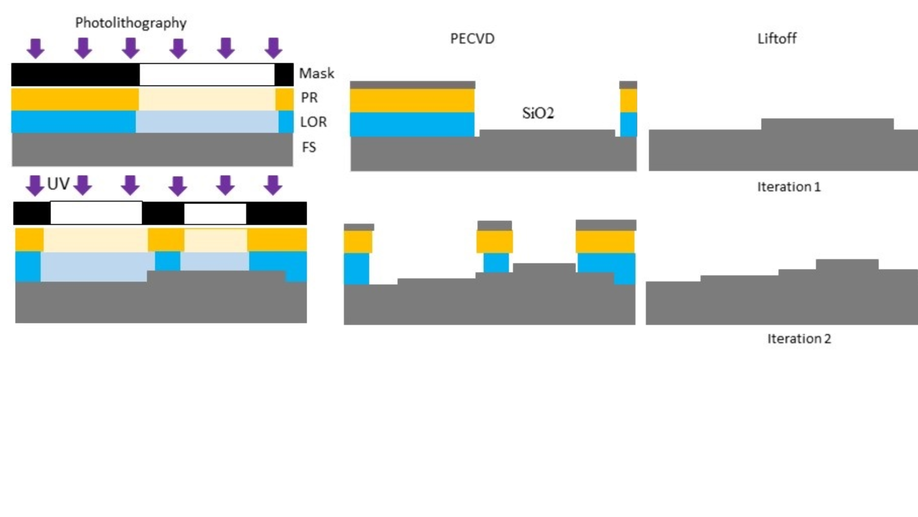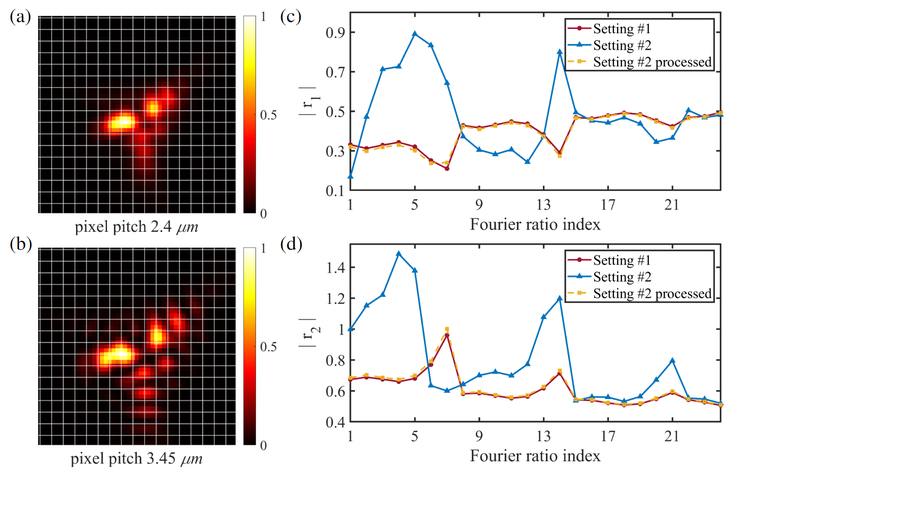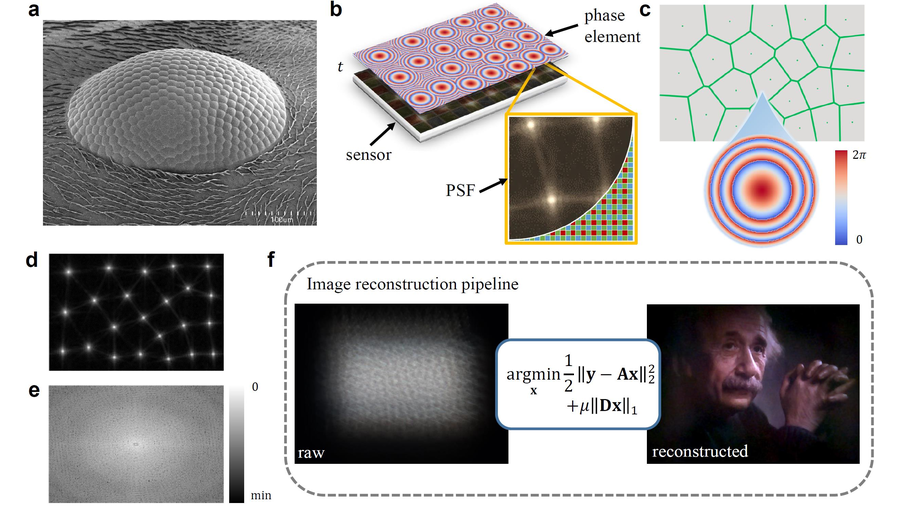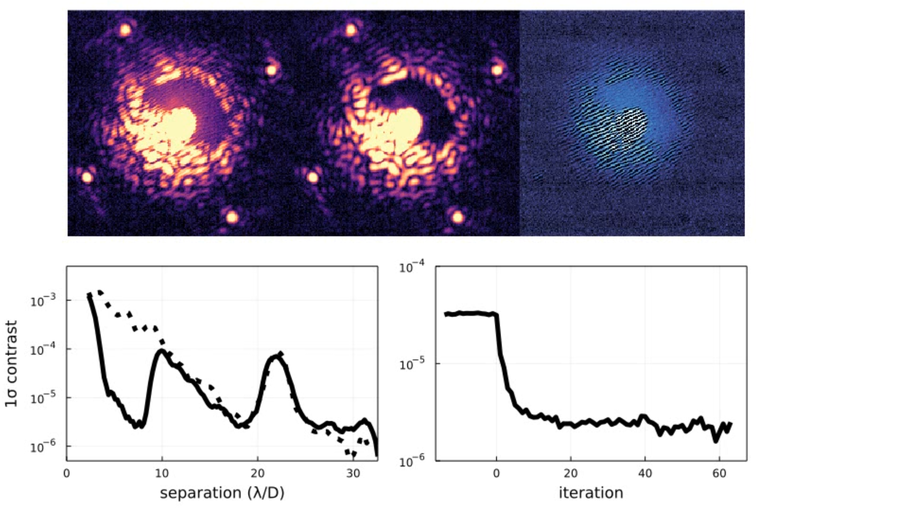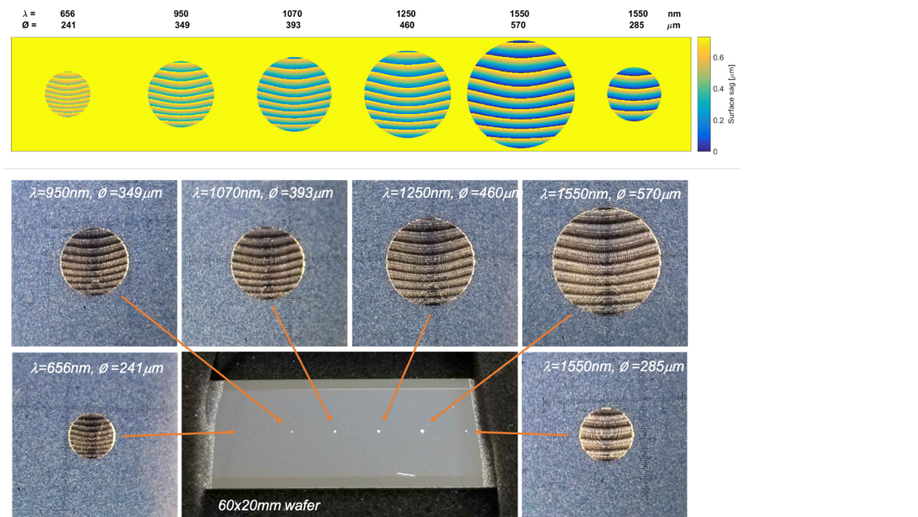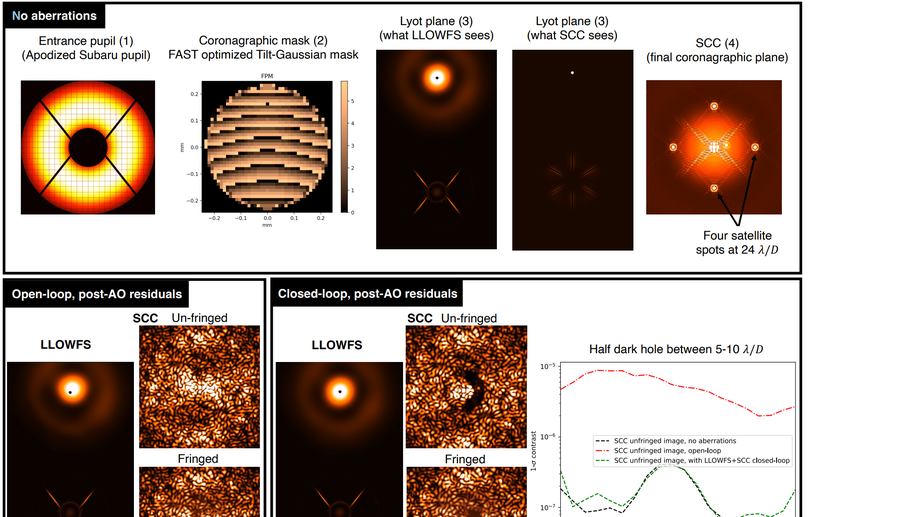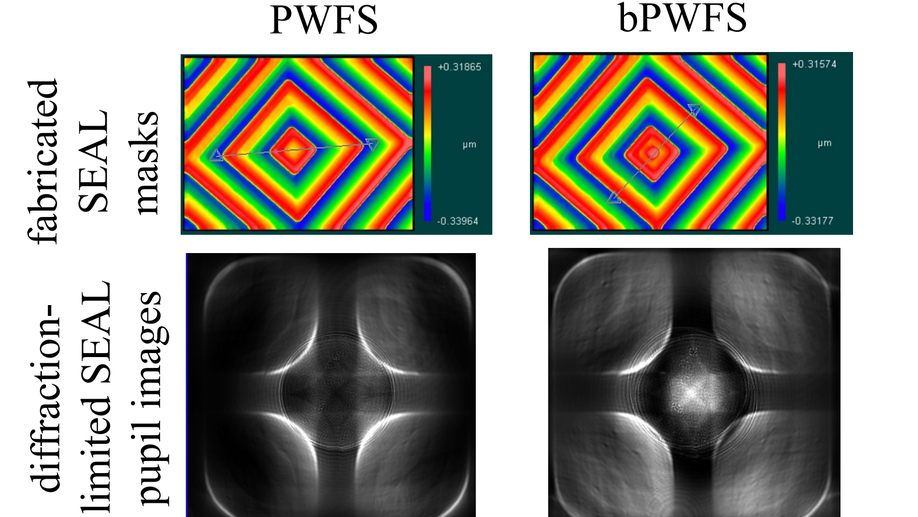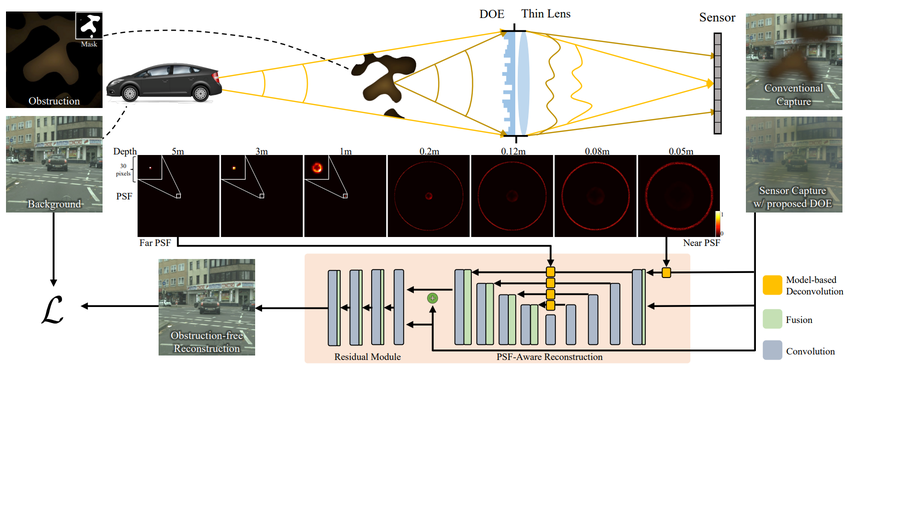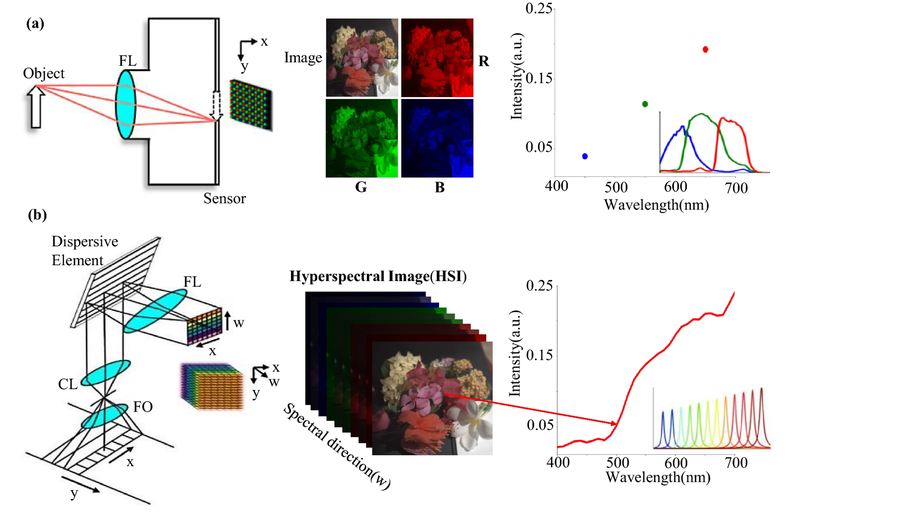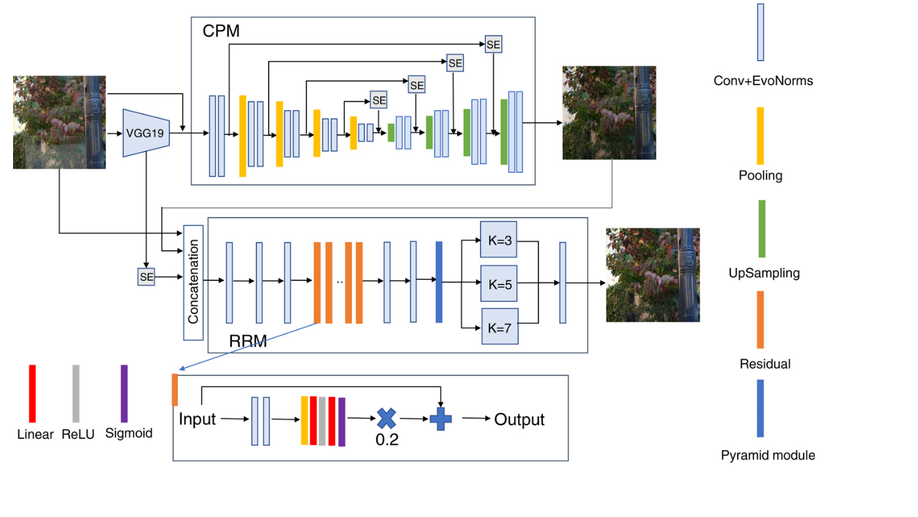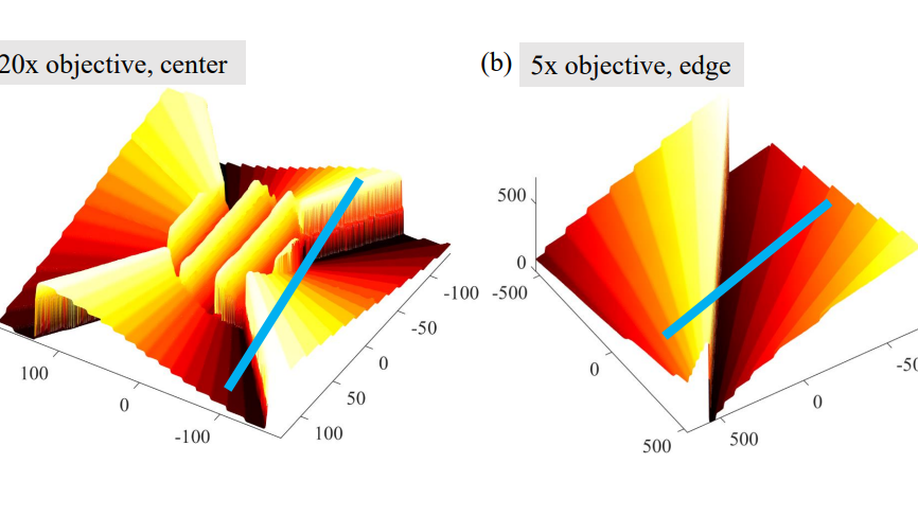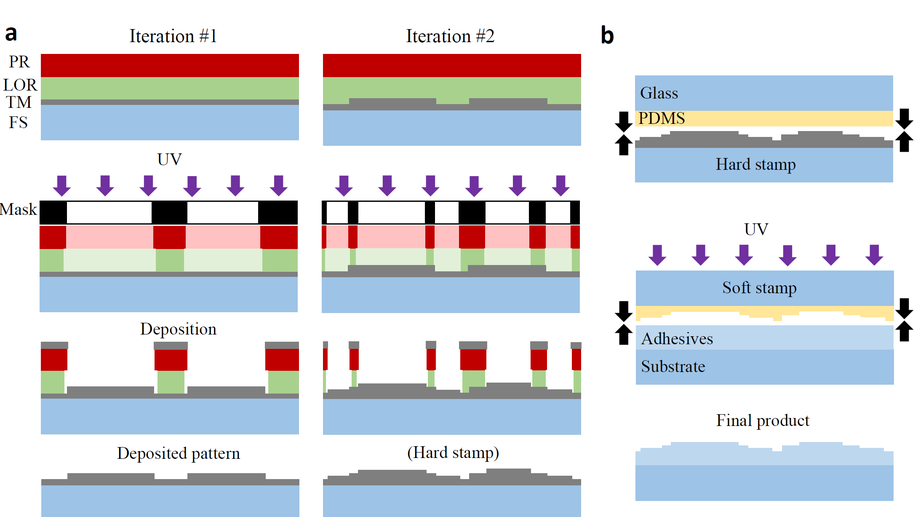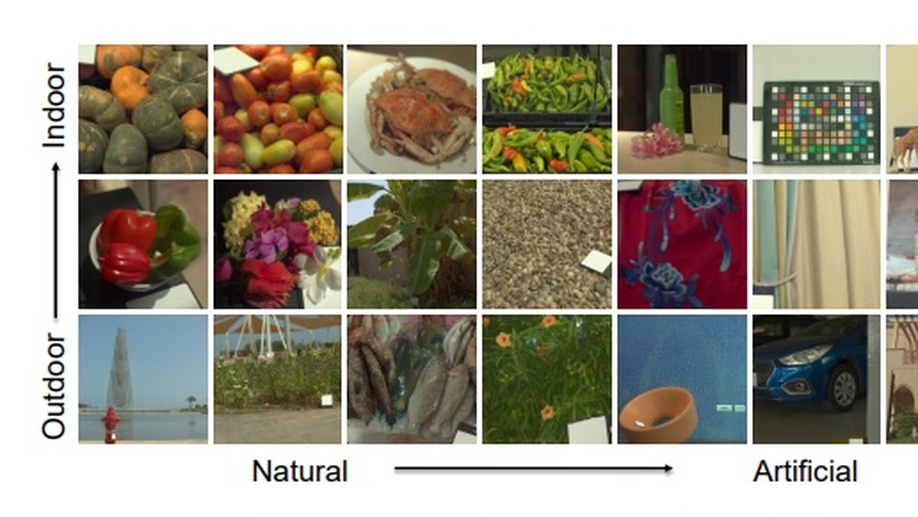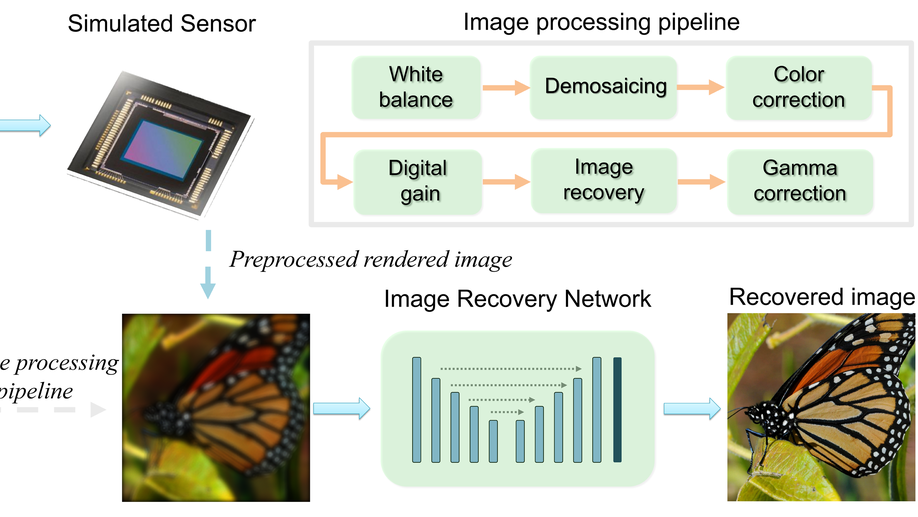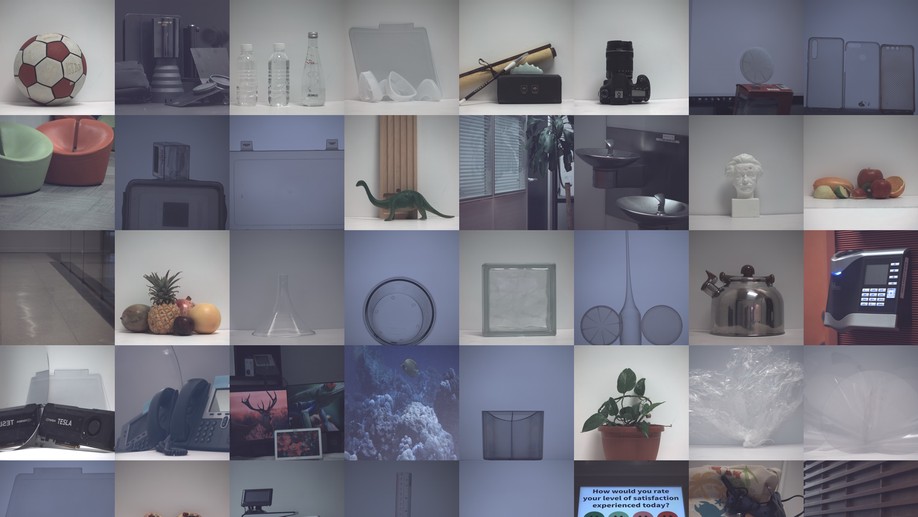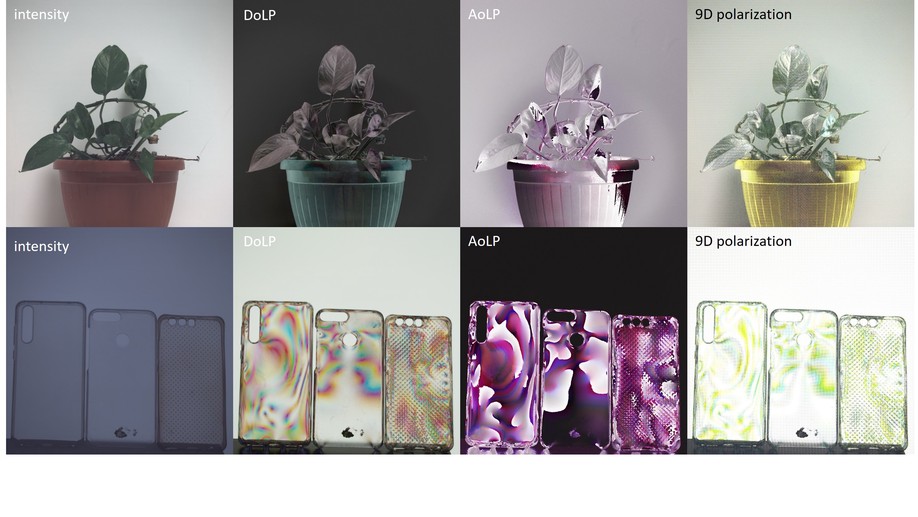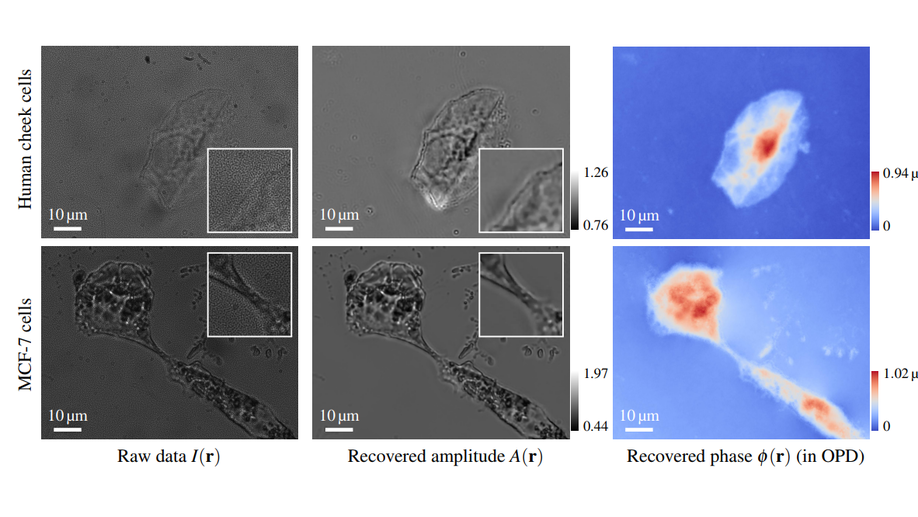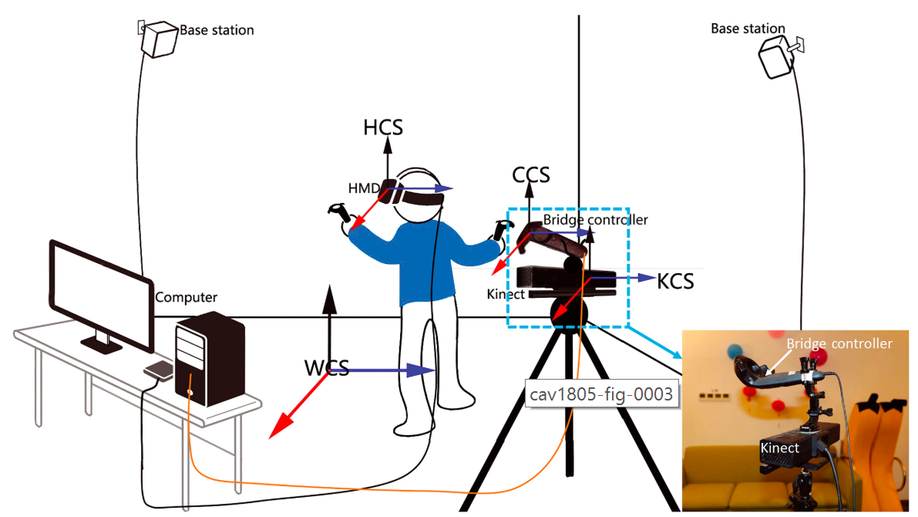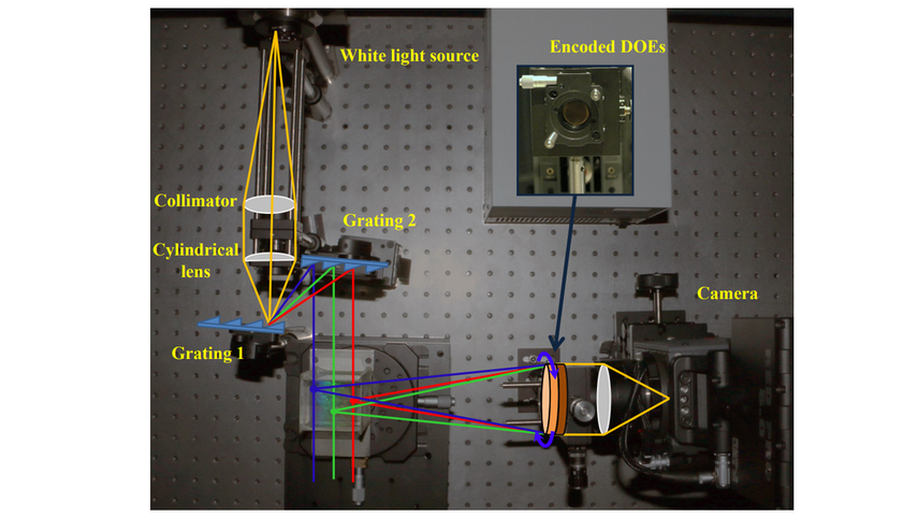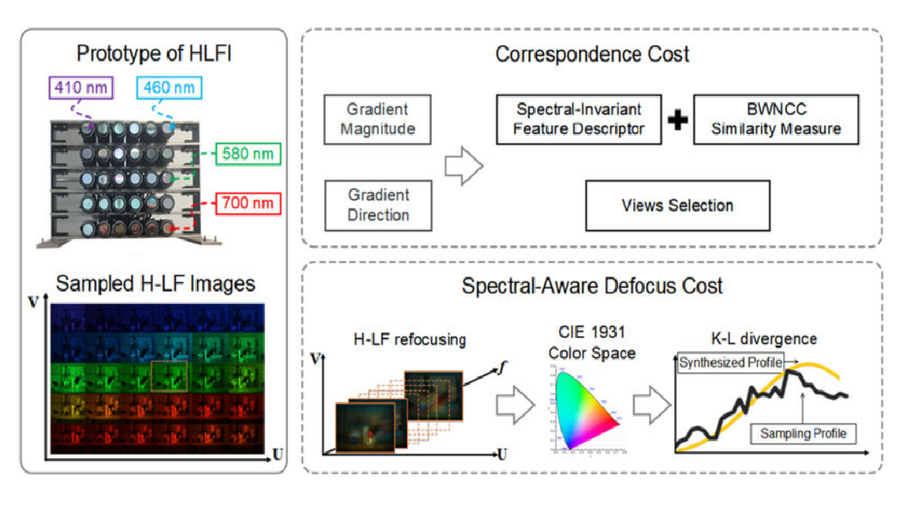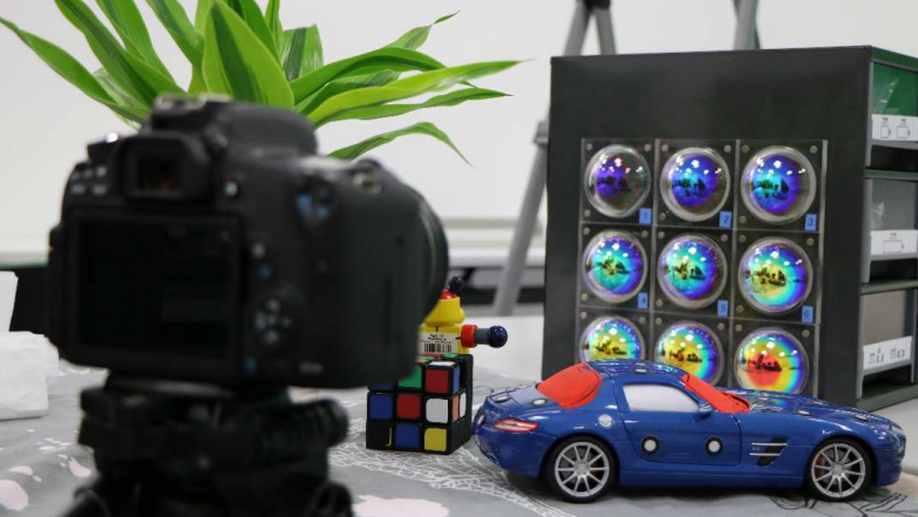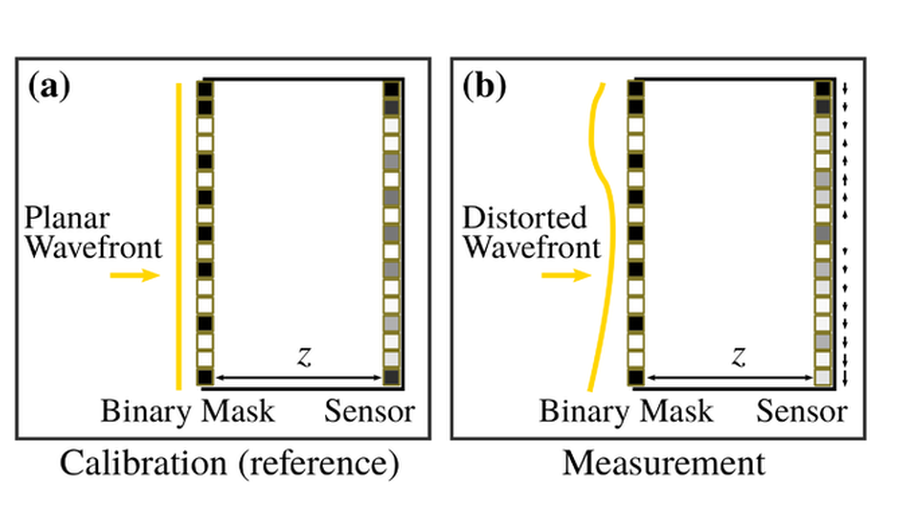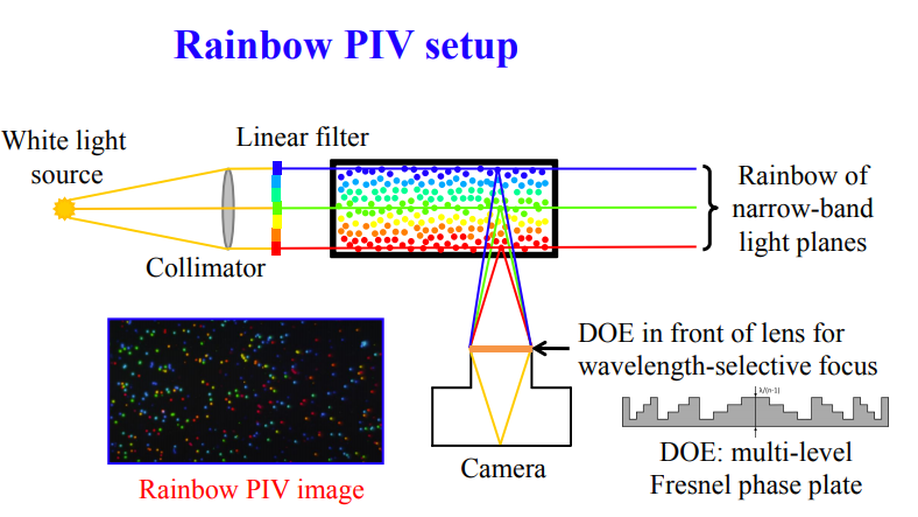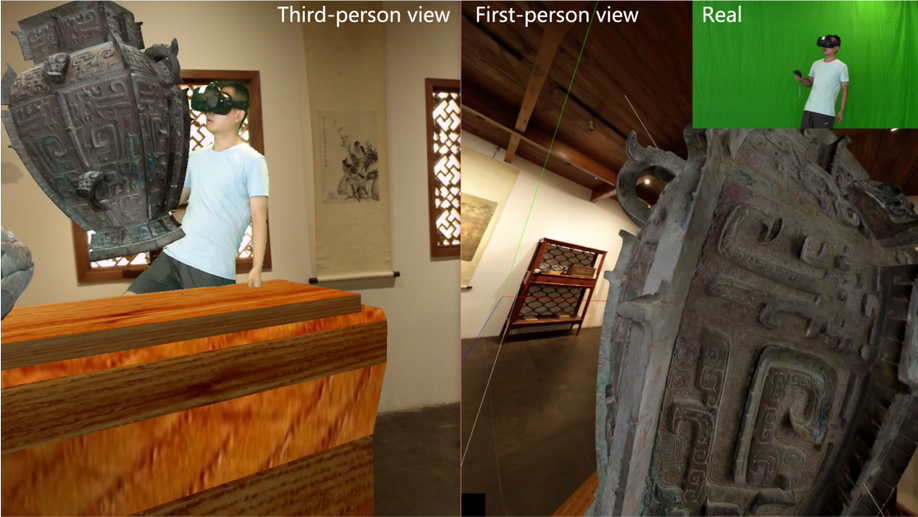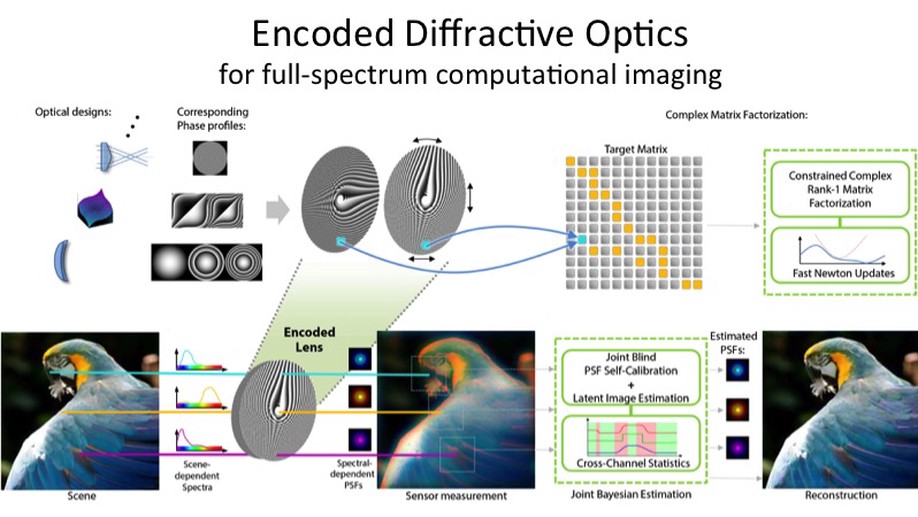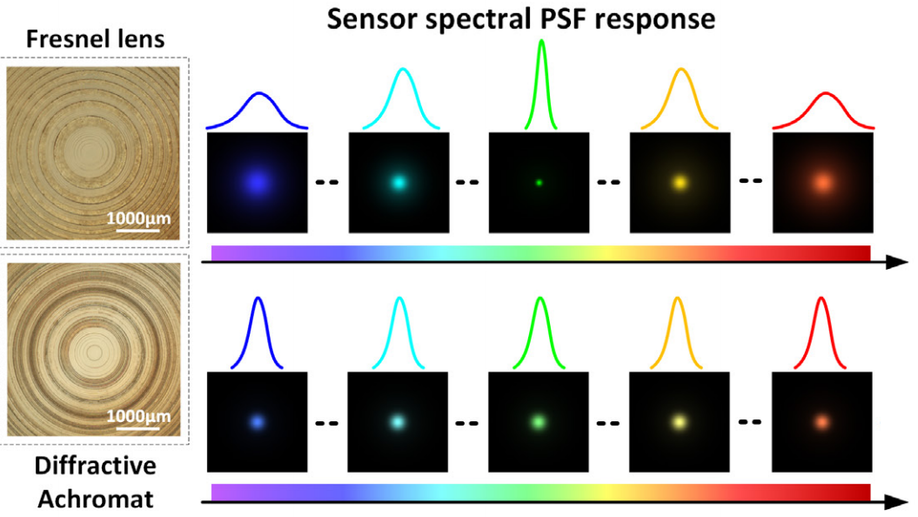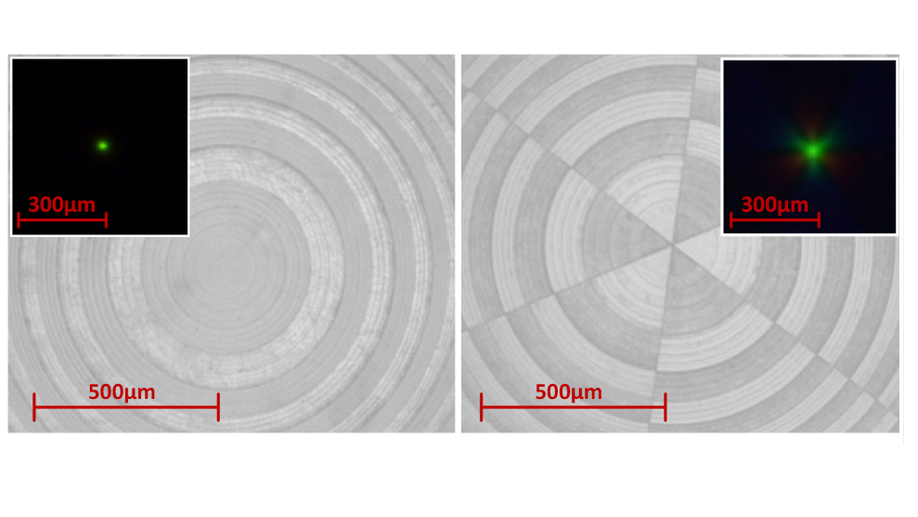December 2024
OPN Year in Optics 2024
We introduced a fully automated lens design algorithm that uses deep optics and differentiable ray tracing.
Ethan Tseng ,
Praneeth Chakravarthula ,
Felix Heide ,
Seung-Hwan Baek ,
Grace Kuo ,
Nathan Matsuda ,
Andrew Mainmone ,
Florian Schiffers ,
Douglas Lanman ,
Qiang Fu ,
Wolfgang Heidrich
December 2024
OPN Year in Optics 2024
We introduced a fully automated lens design algorithm that uses deep optics and differentiable ray tracing.
We propose a new hybrid ray-tracing and wave-propagation (ray-wave) model for accurate simulation of both optical aberrations and diffractive phase modulation.
We propose and demonstrate a linearized model for phase diversity wavefront sensing, facilitating real-time processing and much less data required for training.
We propose a self-supervised method tailored for coded aperture snapshot spectral imaging (CASSI).
We propose a comparative analysis of DOEs fabricated by multi-level photolithography and grayscale lithography.
We show that significant limitations exist arising from the lack of diversity in the prevailing hyperspectral image datasets.
August 2024
IEEE ICCP 2024
We employ B-spline parameterization for the DOE surface geometry representation for RGBD imaging.
Christian Marois ,
Olivier Lardière ,
Joeleff Fitzsimmons ,
Mathieu Demers ,
Adam B Johnson ,
Saugata Dutt ,
Patrick Nkwari ,
Benjamin Gerard ,
Jennifer Dunn ,
Duan Li ,
Qiang Fu ,
Denis Brousseau ,
Suresh Sivanandam ,
William Thompson ,
Christopher Mann ,
Garima Singh ,
Marc-André Boucher ,
Tim Hardy ,
Krzysztof Caputa ,
Simon Thibault ,
Dmitry Savransky ,
Wolfgang Heidrich ,
Maaike van Kooten ,
Jean-Pierre Véran ,
Rebecca Jensen-Clem ,
Darryl Gamroth, ,
Colin Bradley ,
Sanjana Rawat ,
Öykü S Galvan ,
Glen Herriot ,
Jean-Thomas Landry
August 2024
SPIE Adaptive Optics Systems IX
The CAL2 project is being built for the GPI calibration system.
We present DeepLens, a method to learn optical designs of compound lenses ab initio from randomly initialized surfaces without human intervention.
We propose a method to split conventional camera apertures into two halves along with a dual-pixel sensor for various computational imaging applications.
Ethan Tseng ,
Grace Kuo ,
Seung-Hwan Baek ,
Nathan Matsuda ,
Andrew Maimone ,
Florian Schiffers ,
Praneeth Chakravarthula ,
Qiang Fu ,
Wolfgang Heidrich ,
Douglas Lanman ,
Felix Heide
April 2024
Nat. Commun.
We present a method to expand the étendue of holographic displays by 64x with a learned diffractive optical element.
We propose an alternative method for fabricating DOEs without RIE lag and with improved surface smoothness.
We explore the use of hexagonal grids as a new grid structure for DOE design and fabrication.
We propose a new way to fabricate multi-level DOEs by directly growing an optically transparent material on a glass substrate.
We explore bridging the gap between aberrations and depth-from-focus through aberration-aware training (AAT).
We propose a generalized Fourier-based PDWS method by combining an object-independent network with a system-independent image processing procedure.
We propose an end-to-end joint optimization method to learn a DOE placed in front of a projector lens and a compensation network for deblurring.
December 2022
Opt. Express
We propose a lensless camera with an optimized Voronoi-Fresnel phase by maximizing the Modulation Transfer Function volume.
September 2022
Opt. Express
We propose an effective neural network based on low-frequency coefficients in the Fourier domain to determine a better estimate of the unknown aberrations.
We present here results from NRC’s NEW-EARTH lab testing of the Fast Atmospheric SCC Technique, a variant of the SCC and its integration with a Lyot-stop Low-Order Wavefront Sensor.
Olivier Lardière ,
Christian Marois ,
William Thompson ,
Garima Singh ,
Adam Johnson ,
Joeleff Fitzsimmons ,
Tim Hardy ,
Mamadou N’diaye ,
Wolfgang Heidrich ,
Qiang Fu ,
Denis Brousseau ,
Simon Thibault
August 2022
SPIE
SPIDERS optical design is fully reflective up to the FPM to avoid chromatic aberrations and reduce the number of surfaces.
Christian Marois ,
Olivier Lardière ,
William Thompson ,
Garima Singh ,
Adam Johnson ,
Tim Hardy ,
Joeleff Fitzsimmons ,
Benjamin Gerard ,
Suresh Sivanandam ,
Simon Thibault ,
Dmitry Savransky ,
Colin Bradley ,
Rebecca Jensen-Clem ,
Mathieu Demers ,
Qiang Fu ,
Wolfgang Heidrich ,
Mamadou N’Diaye
August 2022
SPIE
The NRC Canada is funding two projects, the SPIDERS pathfinder at the Subaru telescope (ETA 2023), and the CAL2 upgrade of the Gemini Planet Imager-2 (ETA 2024), to deploy a modified self-coherent camera (based on FAST) to measure the focal plane electric field, and to apply wavefront corrections in a closed-loop down to 10s of ms in a narrow band.
Garima Singh ,
William Thompson ,
Olivier Lardière ,
Christian Marois ,
Mamadou N’Diaye ,
Adam Johnson ,
Jean-Pierre Véran ,
Glen Herriot ,
Benjamin Gerard ,
Qiang Fu ,
Wolfgang Heidrich
August 2022
SPIE
We present LLOWFS closed-loop laboratory results under simulated post-Adaptive Optics residuals of GPI 2.0 and simulations of the LLOWFS and FAST sensors for SPIDERS
We present three different ongoing wavefront sensing and control project developments on the Santa cruz Extreme AO Laboratory (SEAL) testbed.
We propose a monocular single-shot imaging approach that optically cloaks obstructions by emulating a large array.
We propose a fully differentiable optical design method for lens design.
We present a thorough investigation of more than 25 state-of-the-art spectral reconstruction methods.
June 2022
J. Image Graph.
This review reports the latest methods, algorithms, and applications in computational imaging.
April 2022
Pattern Recognit.
We introduce a new dataset synthesis method as well as a novel neural network architecture for single image reflection removal.
We propose an additive lithographic fabrication process to realize simultaneous micrometer and millimeter features.
October 2021
Opt. Express
We propose an etch-free additive lithographic fabriction method for versatile reflective and transmissive DOEs.
We propose a deep unrolling network to examine the problem of illumination spectra estimation in multispectral images.
We propose a general end-to-end complex lens design framework enabled by a differentiable ray tracing image formation model.
We propose a mask-ToF method to mitigate the flying pixels in 3D imaging.
We propose a joint design for snapshot HDR imaging with a spatially varying modulation mask.
We propose a polarization demosaicking algorithm for both monochrome and colour DoFP cameras.
We porpose a combinatory method to improve phase retrieval performance.
We present a bench optical design for the first Canadiana test-bed NEW EARTH.
Christian Marois ,
Benjamin Gerard ,
Olivier Lardière ,
A. Anthony ,
C. Bradley ,
J. Dunn ,
Qiang Fu ,
T. Hardy ,
Wolfgang Heidrich ,
G. Herriot ,
E. Nielsen ,
S. Sivanandam ,
D. Sivransky ,
S. Thibault ,
William Thompson ,
Jean-Pierre Véran ,
the GPI CAL2.0 Team
December 2020
SPIE
We present a new second stage speckle-correction solution for the Gemini Planet Imager (GPI).
August 2020
SIGGRAPH 2020
We present a valid polarization-based reflection contaminated image synthesis method.
We propose a method for snapshot HDR imaging by learning an optical HDR encoding with a DOE in a single image.
We demonstrate a quantitative imaging of phase and bright field amplitude using collimated white light illumination.
We propose a polarization demosaicking algorithm for both monochrome and color DoFP cameras.
We propose an approach for HDR image reconstruction using a spatially-varying mask and an inception network.
We propose a snapshot hyperspectral imaging system that employs a diffractive optical element and an end-to-end network.
We propose a new formula to connect between slopes wavefront sensors and curvature sensors.
We demonstrate an adaptive optics system for regular cameraswith unprecedented capability to sense and correct large distortions.
May 2018
COMPUT ANIMAT VIRT W.
We propose a system to create high‐quality 1080p live MR footage, enabling realistic virtual experiences to be shared among a number of people.
We propose a reconfigurable rainbow PIV system that extends the volume size to a considerable range.
We describe how scene depth can be extracted using a hyperspectral light field capture (H-LF) system.
We present a single camera hyperspectral light field imaging solution with spectral coded catadioptric mirror arrays.
We introduce a Coded Wavefront Sensor that provides high spatio-temporal resolution using a simple masked sensor, under white light illumination.
We demonstrate a 3D Particle Imaging Velocimetry method by employing a rainbow encoding and 3D optical flow decoding algorithm.
We propose a mixed reality system that overlays the virtual world with real world objects captured by a Kinect depth camera.
October 2016
J. Mod. Opt.
We propose an improved particle swarm optimization method of ultra-thin diffractive optical elements design for multicolour beam shaping.
We introduce numerically optimized encoded phase masks for focus and zoom through changes in the mechanical alignment.
We introduce a diffractive achromat based on computational optimization and a corresponding algorithm for correction of residual aberrations.
November 2015
Opt. Express
We jointly design lightweight diffractive-refractive optics and post-processing algorithms to enable imaging under white light illumination.
